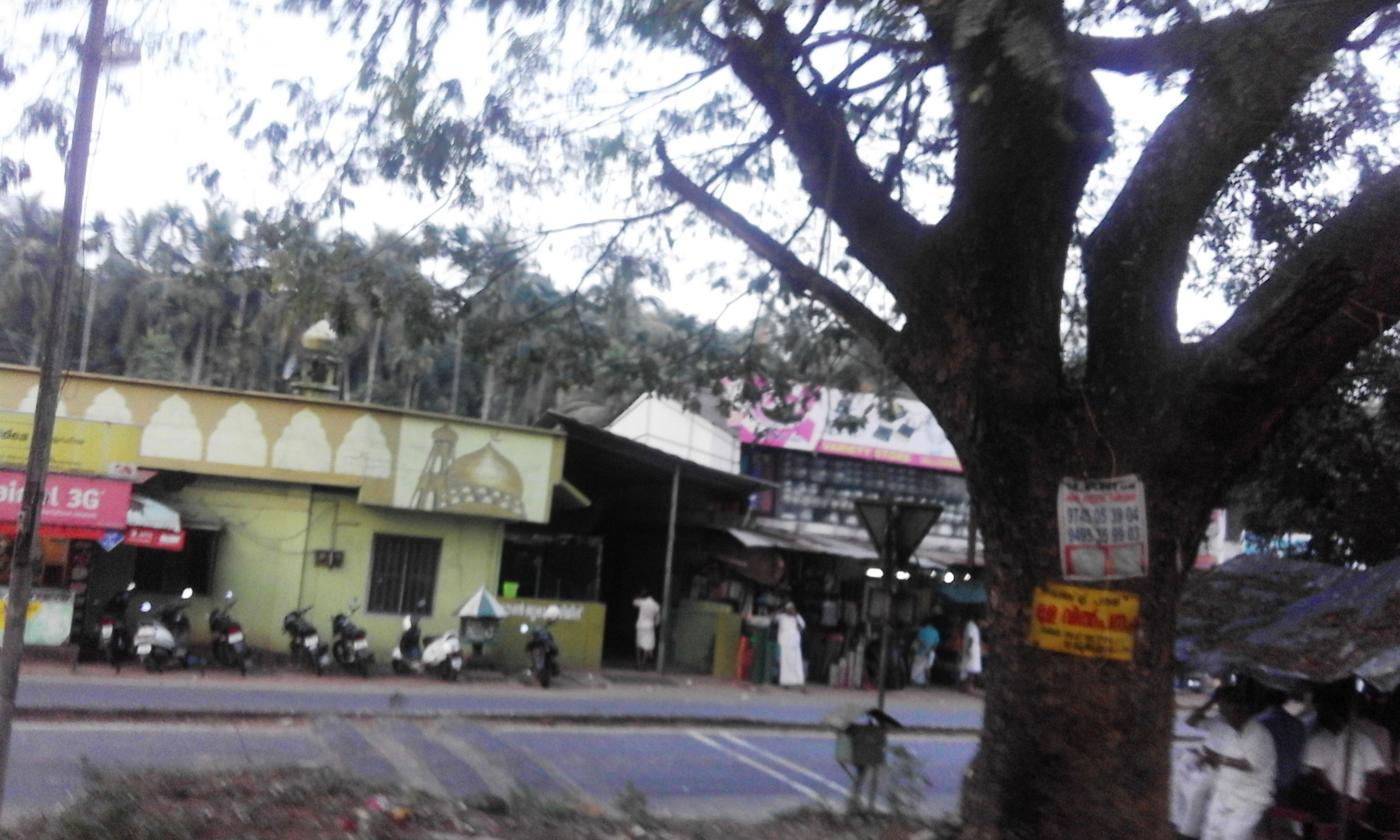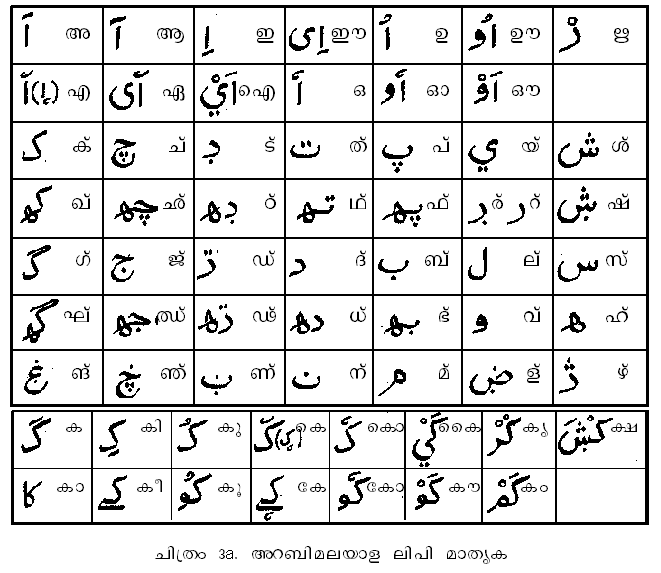|
Valluvambram Junction
Valluvambram Junction is a small town in Malappuram District, in India. Location Valluvambram Junction is on the National Highway between Malappuram and Kozhikode cities. Valluvambram is a village that splits two main highways to Manjeri Gudallur and Malappuram Palakkad. The place is famous for Selling and Buying Used luxury cars and commercial vehicles from 1980s . One of the TVS Vehicles Showroom is situated in this place, Half Valluvambram. Distance from Valluvambram: * Kozhikode: 38 km * Malappuram: 12 km * Manjeri: 9 km * Calicut Airport: 14 km Nearby villages * Pookkottur Gram Panchayath * Pulpatta Gram Panchayath * Mongam and Morayur * Cheruputhoor, Thripanachi and Kozhithayi * Ozhukur and Poonthalaparamba *Valamangalam and Kallachal * Thadapparamba and Pappatingal * Athanikkal and Aravankara * Melmury and Alathurpady * Valayattapady and Swalath Nagar * Pullanoor, Moochikkal and Pullara * Alukkal, Veembur and Pattarkulam Mongam and Morayur Mo ... [...More Info...] [...Related Items...] OR: [Wikipedia] [Google] [Baidu] |
States And Territories Of India
India is a federal union comprising 28 states and 8 union territories, with a total of 36 entities. The states and union territories are further subdivided into districts and smaller administrative divisions. History Pre-independence The Indian subcontinent has been ruled by many different ethnic groups throughout its history, each instituting their own policies of administrative division in the region. The British Raj mostly retained the administrative structure of the preceding Mughal Empire. India was divided into provinces (also called Presidencies), directly governed by the British, and princely states, which were nominally controlled by a local prince or raja loyal to the British Empire, which held ''de facto'' sovereignty ( suzerainty) over the princely states. 1947–1950 Between 1947 and 1950 the territories of the princely states were politically integrated into the Indian union. Most were merged into existing provinces; others were organised into ... [...More Info...] [...Related Items...] OR: [Wikipedia] [Google] [Baidu] |
Cheruputhoor
Cheruputhoor or Cheruputhur is a village in Pulpatta Gram panchayat in Malappuram district, Kerala state. Neighboring places Educational institutions * AMLP School, Cheruputhoor Economy The economy encompasses traditional village farming, small scale businesses and foreign money. A good percentage of natives are working in the Middle East as unskilled workers. The local economy is currently undergoing a construction boom and which is solely dependent on the Gulf money. The main crops that are cultivated are coconut The coconut tree (''Cocos nucifera'') is a member of the palm tree family ( Arecaceae) and the only living species of the genus ''Cocos''. The term "coconut" (or the archaic "cocoanut") can refer to the whole coconut palm, the seed, or the ..., aracnut, paddy and banana. Health care The Government Homoeopathic Dispensary, Pulpatta is situated in Cheruputhoor. It was established in 1978. See also AMLP School Cheruputhur References Villages in M ... [...More Info...] [...Related Items...] OR: [Wikipedia] [Google] [Baidu] |
Nediyiruppu
Nediyiruppu is a region of the Kondotty municipality in Malappuram district, Kerala, India. It is situated from Malappuram, the district headquarters. Important places in Nediyiruppu village are Musliyarangadi, Colony Road Junction (previously noted as Nediyiruppu landmark), Kottukkara, Meleparambu, Chiryil Chungam, Kodangad, and Kuruppath. Historically, Nediyiruppu was important as the capital Zamorin dynasty. Nediyiruppu Swaroopam Road, in Poyilikkave, was named in remembrance of that heritage. History Nediyiruppu was the headquarters of the Zamorin rulers of the Kingdom of Calicut (the kingdom was called ''Nediyiruppu Swaroopam'' at that time). According to some other historians, the wealth of Manavikrama royalty was kept in a treasury at Nediyiruppu and they called the place ''Nedi-Iruppu'' meaning "Got-and-placed". This treasury was located in Viruthiyil Paramba in Nediyiruppu. Nediyiruppu village is a part of the Kondotty municipality. Demographics India census, Nediy ... [...More Info...] [...Related Items...] OR: [Wikipedia] [Google] [Baidu] |
Arabic Script
The Arabic script is the writing system used for Arabic and several other languages of Asia and Africa. It is the second-most widely used writing system in the world by number of countries using it or a script directly derived from it, and the third-most by number of users (after the Latin and Chinese scripts). The script was first used to write texts in Arabic, most notably the Quran, the holy book of Islam. With the religion's spread, it came to be used as the primary script for many language families, leading to the addition of new letters and other symbols. Such languages still using it are: Persian (Farsi/Dari), Malay ( Jawi), Uyghur, Kurdish, Punjabi (Shahmukhi), Sindhi, Balti, Balochi, Pashto, Lurish, Urdu, Kashmiri, Rohingya, Somali and Mandinka, Mooré among others. Until the 16th century, it was also used for some Spanish texts, and—prior to the language reform in 1928—it was the writing system of Turkish. The script is written from right to left in a cu ... [...More Info...] [...Related Items...] OR: [Wikipedia] [Google] [Baidu] |
Arabi Malayalam
Arabi Malayalam (also called Mappila Malayalam and Moplah Malayalam) is the traditional Dravidian language of the Mappila Muslim community. It is spoken by several thousand people, predominantly in the Malabar Coast of Kerala state, southern India. The form can be classified as a regional dialect in northern Kerala, or as a class or occupational dialect of the Mappila community. It can also be called a vernacular in general, or as a provincial patois, with the latter label being increasingly applicable in Colonial times. All the forms of the Malayalam language, including Mappila, are mutually intelligible.Subramoniam, V. I. (1997). ''Dravidian Encyclopaedia''. Vol. 3, Language and literature. Thiruvananthapuram (Kerala): International School of Dravidian Linguistics. pp. 508-09/ref> The Mappila form shows some lexical admixture from Arabic and Persian.Krishna Chaitanya. ''Kerala. India, the Land and the People.'' New Delhi: National Book Trust, India, 1994/ref> The variety ... [...More Info...] [...Related Items...] OR: [Wikipedia] [Google] [Baidu] |
Aravana
Aravana muttu or arabana muttu is an art form prevalent among Muslims in Kerala state of south India, named after the aravana, a hand-held, one-sided flat tambourine or drumlike musical instrument, derived from Arabia. It is made of wood and animal skin, similar to the duff but a little thinner and bigger. In the opinion of Becker Edakkazhiyur, a noted arabana musician, "the ritualistic performance of `Arabana Reefa Ee Raathib Muttu' has been mistaken for `Arabana Kali Muttu,' which is purely for entertainment. While the former is almost extinct, the latter, known for its aesthetic appeal, is the one presented nowadays." The arabana muttu, which is performed to welcome dignitaries, is a more difficult art than the duff muttu. There are traditional and modern methods of playing the aravana. Traditionally, with participants sitting in a semicircle, the leader of the group will start singing. When the initial song is over, the players will start to play following the song of the le ... [...More Info...] [...Related Items...] OR: [Wikipedia] [Google] [Baidu] |
Kolkali
Kolkali is a folk art performed in Malabar region of Kerala, India. The dance performers move in a circle, striking small sticks and keeping rhythm with special steps. The circle expands and contracts as the dance progress. The accompanying music gradually rises in pitch and the dance reaches its climax. Kolkali is now a popular event in Kerala School Kalolsavam, which is considered as the biggest cultural event of Asia. There are two styles of Kolkali: the actual Kolkali and Thekkan Koladi. The actual Kolkali consists of Thacholikali, Rajasooyam etc. The actual kolkali is almost at verge of extinction and Thekkan Koladi is still alive as it is added in state kololsavams. Many of the traditional performing art forms of Kerala like Kathakali, Velakali, Poorakkali and Thacholikali; Kolkali, also have drawn elements from Kalarippayatt during their stages of evolution. Kathakali has borrowed much from Kalarippayattu in its basic body preparative training of the actor not only in term ... [...More Info...] [...Related Items...] OR: [Wikipedia] [Google] [Baidu] |
Duff Muttu
Duffmuttu (also: Dubhmuttu) is an art form prevalent in the Malabar region of the states of Kerala and Karnataka in south India. It derives its name from the daf, duff, a percussion instrument made of wood and ox skin. The word duff is of Arabic origin and is also called a ''thappitta''. Duffmuttu is performed as social entertainment and to commemorate festivals, ''uroos'' (festivals connected with mosques) and weddings. Duffmuttu can be performed at any time of the day. A ''duffmuttu'' performance usually consists of ten members who stand or sit facing each other singing songs and swaying their bodies to the tempo of the song which is set by the rhythmic beats of the ''duff''. Duffmuttu songs are a tribute to Islamic heroes and martyrs. The lead player also leads the troupe in song while the others provide the chorus. The dancers drum the duff with their fingers or palms and while moving rhythmically often toss them over their heads. A closely related art form is the Aravana M ... [...More Info...] [...Related Items...] OR: [Wikipedia] [Google] [Baidu] |
Zamorin
The Samoothiri (Anglicised as Zamorin; Malayalam: , Arabic: ''Sāmuri'', Portuguese: ''Samorim'', Dutch: ''Samorijn'', Chinese: ''Shamitihsi''Ma Huan's Ying-yai Sheng-lan: 'The Overall Survey of the Ocean's Shores' 433 Translated and Edited by J. V. G. Mills. Cambridge University Press for the Hakluyt Society (1970).) was the hereditary Nair monarch and ruler of the Kingdom of Kozhikode (Calicut) in the South Malabar region of India. Calicut was one of the most important trading ports on the southwest coast of India. At the peak of their reign, they ruled over a region extending from Kozhikode Kollam (Kollam) to the borders of Panthalayini Kollam (Koyilandy).Varier, M. R. Raghava. "Documents of Investiture Ceremonies" in K. K. N. Kurup, Edit., "India's Naval Traditions". Northern Book Centre, New Delhi, 1997K. V. Krishna Iyer, ''Zamorins of Calicut: From the earliest times to AD 1806''. Calicut: Norman Printing Bureau, 1938. The Zamorins belonged to the Eradi caste of the Saman ... [...More Info...] [...Related Items...] OR: [Wikipedia] [Google] [Baidu] |
Thinayancherry Elayath
The Samoothiri (Anglicised as Zamorin; Malayalam: , Arabic: ''Sāmuri'', Portuguese: ''Samorim'', Dutch: ''Samorijn'', Chinese: ''Shamitihsi''Ma Huan's Ying-yai Sheng-lan: 'The Overall Survey of the Ocean's Shores' 433 Translated and Edited by J. V. G. Mills. Cambridge University Press for the Hakluyt Society (1970).) was the hereditary Nair monarch and ruler of the Kingdom of Kozhikode (Calicut) in the South Malabar region of India. Calicut was one of the most important trading ports on the southwest coast of India. At the peak of their reign, they ruled over a region extending from Kozhikode Kollam ( Kollam) to the borders of Panthalayini Kollam (Koyilandy).Varier, M. R. Raghava. "Documents of Investiture Ceremonies" in K. K. N. Kurup, Edit., "India's Naval Traditions". Northern Book Centre, New Delhi, 1997K. V. Krishna Iyer, ''Zamorins of Calicut: From the earliest times to AD 1806''. Calicut: Norman Printing Bureau, 1938. The Zamorins belonged to the Eradi caste of the Saman ... [...More Info...] [...Related Items...] OR: [Wikipedia] [Google] [Baidu] |
Malayalam
Malayalam (; , ) is a Dravidian language spoken in the Indian state of Kerala and the union territories of Lakshadweep and Puducherry (Mahé district) by the Malayali people. It is one of 22 scheduled languages of India. Malayalam was designated a "Classical Language of India" in 2013. Malayalam has official language status in Kerala, and Puducherry ( Mahé), and is also the primary spoken language of Lakshadweep, and is spoken by 34 million people in India. Malayalam is also spoken by linguistic minorities in the neighbouring states; with significant number of speakers in the Kodagu and Dakshina Kannada districts of Karnataka, and Kanyakumari, district of Tamil Nadu. It is also spoken by the Malayali Diaspora worldwide, especially in the Persian Gulf countries, due to large populations of Malayali expatriates there. There are significant population in each cities in India including Mumbai, Bengaluru, Delhi, Kolkata, Pune etc. The origin of Malayalam remains a matter of ... [...More Info...] [...Related Items...] OR: [Wikipedia] [Google] [Baidu] |








.jpg)